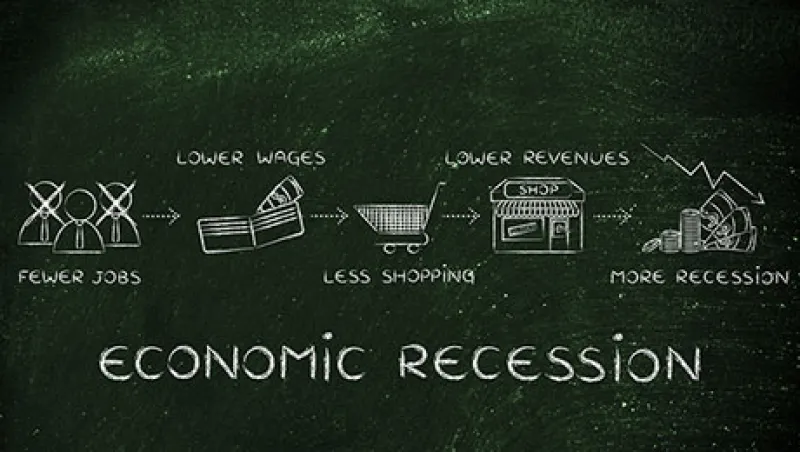Some market observers predict a global financial crisis in 2016–’17 — one just as serious, if not more so, than that of 2008–’09. With excess liquidity sloshing around global markets and Brazil, China and various commodity exporters experiencing economic turmoil, the stage is being set for another crisis.
Last weekend the International Monetary Fund made its second cut to global growth forecasts this year. Many economic commentators have begun asking what would happen if the next recession hit while interest rates were still far below pre-2008 levels.
Despite these issues, the regulatory foundations built over the past eight years are resilient, and an economic crisis — if it does occur — will not stem from the same causes as those of the late-2000s recession. Indeed, securitization and private sector debt have decreased since 2008. And although public debt ratios are high, very low interest rates offset much of the risk. What’s more, there is no bubble in the stock markets or real estate markets — the U.K.’s markets being the exception. Though there is a bond bubble, central banks are doing all they can to prevent it from bursting.
It will have to be a new shock to trigger another financial crisis, with the leading suspects being a massive depreciation of the yuan, an unexpected inflationary shock or the default of an emerging-markets nation or outsize corporation.
Signs of financial fragility have been growing since the second quarter of 2015. The European Central Bank’s decision last year to adopt ultra-expansionary monetary policies via quantitative easing has created abundant liquidity. This policy in turn has led to substantial capital flows between asset classes and countries, which might cause a collapse of those financial markets from which capital is withdrawn. Such a collapse could be triggered by an unexpected inflationary shock, such as a serious geopolitical crisis that causes the oil price to rise again, forcing central banks to raise their interest rates and pop the current bond bubble.
There is an upside to this excess liquidity, mind you. European equity prices have been on a downward trend since the second quarter of 2015 and fell heavily in December 2015 and January 2016. But as the ECB further ramps up its expansionary monetary policy, and investing abroad becomes less attractive for investors because of increasing economic fragility outside of Europe, we are left with European equities as the only major asset class that could be attractive for investment of liquidity.
Another potential crisis trigger would be a significant credit incident. The default of a large, troubled country like Brazil or a significant corporation — such as one in the U.S. energy sector — would lead to a rise in U.S. and European risk premiums. The impact would hit euro zone peripheral bonds and corporate bonds especially hard, as the markets for these assets are relatively illiquid. Certainly, the withdrawal of investors from these securities would mean a sharp uptick in risk premiums and, in turn, lead to a loss of solvency for peripheral countries and elevated corporate financing costs.
Changes in global growth drivers, most notably China, could also precipitate a crisis. Some observers speculate that any contagion of China’s economic illness would be irrational, as yuan depreciation reduces the price of products imported from China and reduces inflation.
That said, there are real mechanisms that could lead to contagion from a China crisis. The country’s economic and financial situation influences Europe’s financial markets for two main reasons. First, the deterioration in the competitiveness of Chinese industry leads to a decline in the volume of China’s imports, and therefore a decline in the volume of euro zone exports to China and to countries that have trade ties with China. Second, depreciation of the yuan would lead to a decline in the value of euro zone exports to China. We would consequently see a decline in European share prices, which would then lead to weaker household consumption and corporate investment.
Any economic forecast depends on myriad factors, though an economic crisis of a magnitude greater than that of 2008 seems highly unlikely in the short to medium term. Indeed, the reforms of the Basel III Accord on bank capital have been read by many bankers as an extended mea culpa for getting things so grievously wrong before the crisis.
Despite the widespread belief of a new crisis roughly every eight years — 1990, 1998, 2007–’08 and perhaps 2016 — what seems more likely is a cyclical slowdown in the U.S. and Europe, because of the ongoing decline of the corporate investment cycle in the U.S. and the weakness of exports to emerging-markets and oil-exporting countries. Let’s hope that Brazil continues to float in 2016.
Patrick Artus is chief economist at Natixis in Paris.
Get more on macro.






